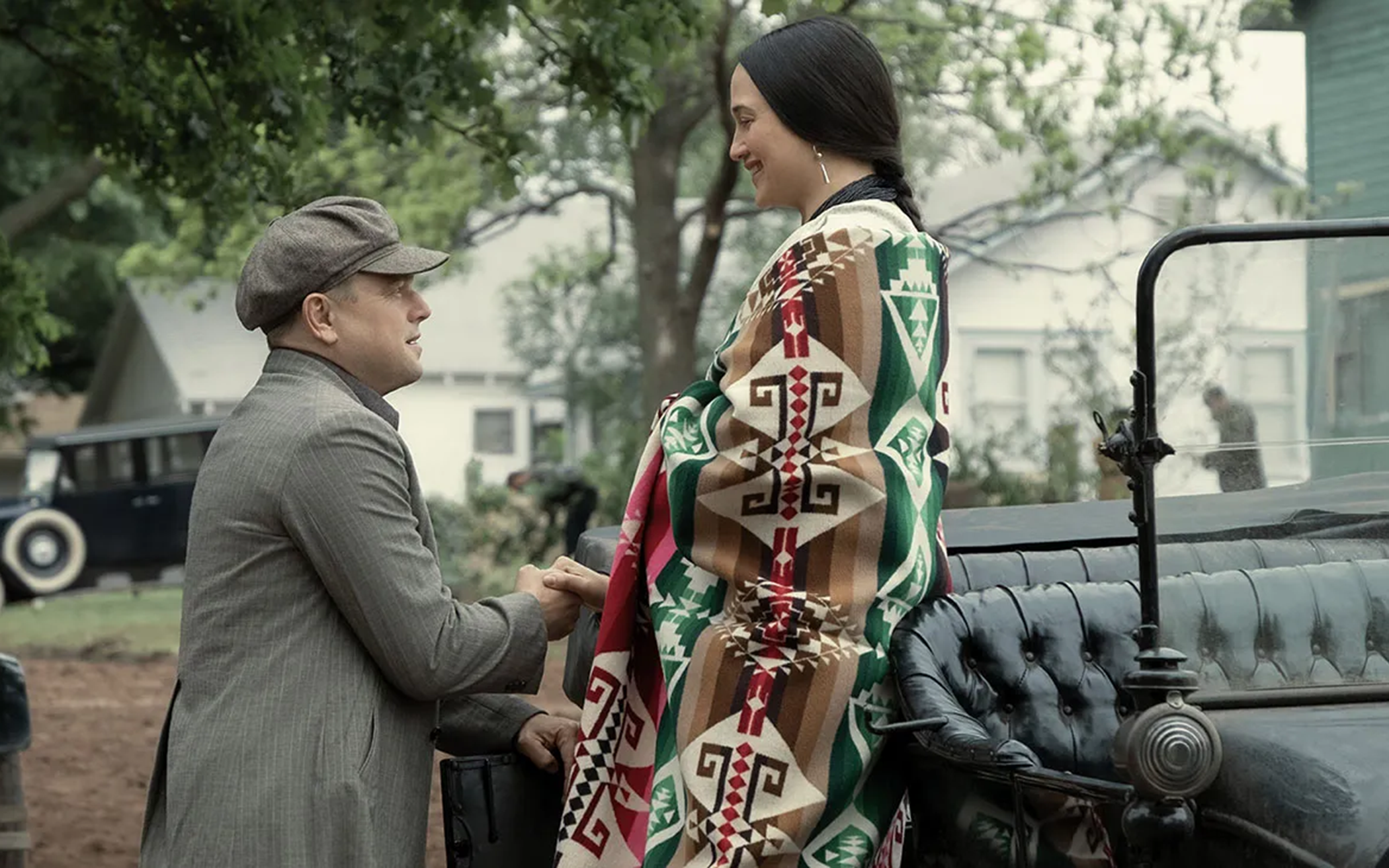I eagerly anticipated Killers of the Flower Moon, especially knowing that director Martin Scorsese collaborated with Six Nations Lifetime Achievement Award winner Robbie Robertson. Robertson was also the leader of The Band, instrumental in the establishment of the Americana genre of music. Then Robertson died on August 9, 2023, which meant this was his last collaboration with Scorsese. I am an Americana aficionado so I wanted to enjoy the score of the movie.
I was disappointed in the movie. Not because of Robertson’s score, or Scorsese’s direction, or the Osage people, or even Leonardo DiCaprio and Robert De Niro, two good actors. I was disappointed that I sat through a nearly three-and-a-half-hour-long movie hoping for some kind of redemption. I hoped that DiCaprio’s character Ernest Burkhart would finally show his love for his wife and confess his dishonesty. I hoped De Niro’s character William King Hale would be honest about his manipulations behind the scenes. I hoped the Osage people would be vindicated by the courts.
What I experienced was a very long, sad movie that did not give me the hope I sought.
Going into the movie, I knew the long history of colonial dispossession of our Indigenous lands through the Doctrine of Discovery. This doctrine still rules Canada’s land system. The 2015 Tsilhqotʼin Supreme Court of Canada (SCC) decision says that Canada’s radical underlying title came into existence when the Crown asserted sovereignty. That means when Canada declared its jurisdiction and ownership of our Indigenous lands, it claimed ownership. The SCC says that Aboriginal title rests on the Crown’s radical underlying title and amounts to proven continuous occupation and use.
In the United States, the Doctrine of Discovery was cited by U.S. Supreme Court Justice John Marshall in his 1823 decision in the court case called Johnson vs. McIntosh. The court assumed American hegemony (leadership or dominance of one group over another) by right of discovery. Also, the turn of the 20th century carried with it the idea of “the vanishing Indian.”
De Niro’s character Hale convinces DiCaprio’s Burkhart that the Osage are passing away and their oil money should come to the two of them instead. Hale encompasses the spirit of colonialism and Burkhart represents the deceiving colonial collaborator and dupe. The Osage are the victims of this malevolent colonial project.
I am glad the Osage people convinced Scorsese to steer away from a movie primarily about the origin of the FBI, which looms large in this story. Scorsese appears in his movie, as he is wont to do, and narrates the fates of all the major characters. Their fates were hard for me to hear, especially that of the lead Osage character, Molly Burkhart, played by the critically-acclaimed Lily Gladstone. It was also hard for me to come to terms with the fates of Ernest Burkhart and William King Hale.
The one moment of hope came from the final scene, an aerial shot of a traditional powwow and a multi-layered circle of Osage singers and dancers. Despite the evil efforts of the Hales and the Burkharts and those like them, the Osage defied the colonial sentences and still live on their lands in Oklahoma to this day. (In theaters, Paramount Pictures)
About the Author
Adrian Jacobs, a member of the Six Nations of the Grand River, Ont., is a senior leader for Indigenous Justice and Reconciliation at the CRCNA. He is an educator on Indigenous history, culture, and contemporary issues.

